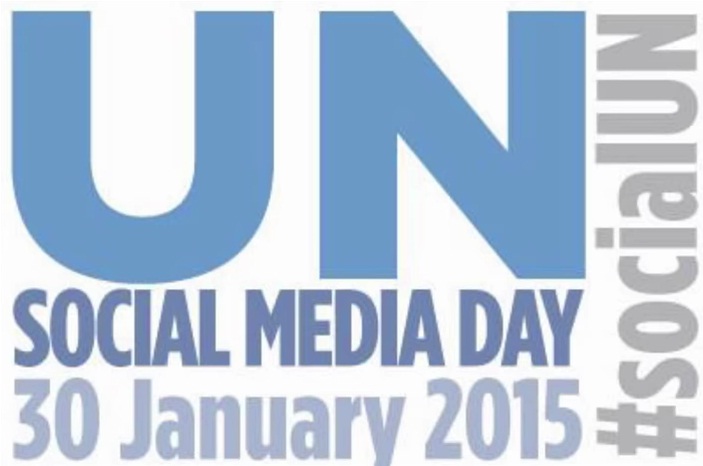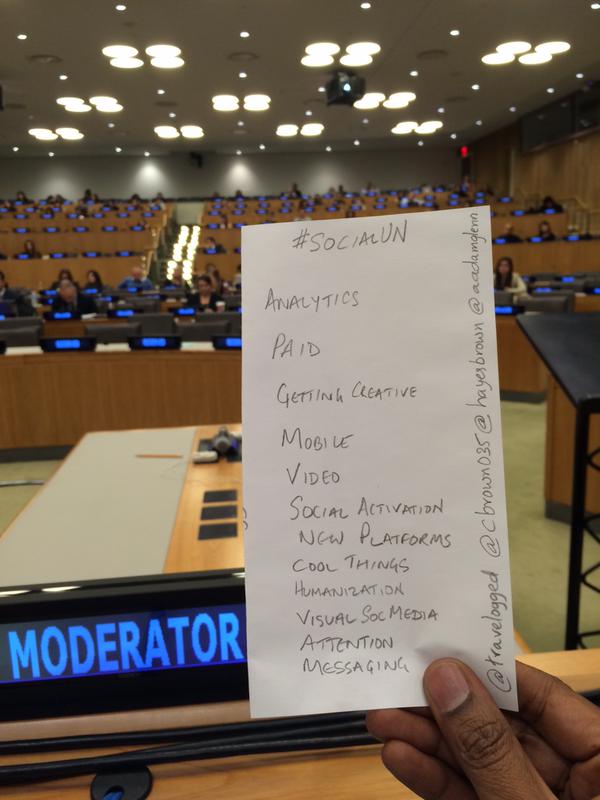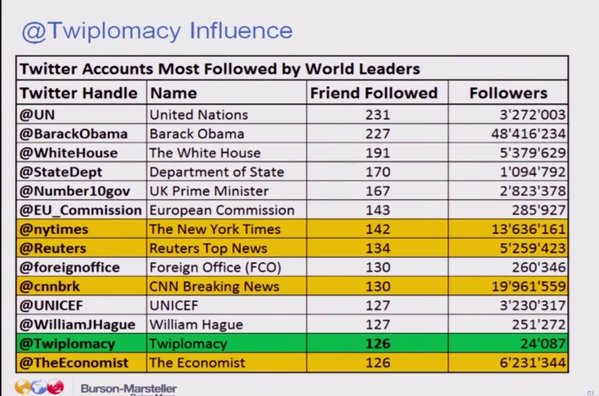
On January 30, 2015, the first ever UN Social Media Day (#SocialUN) was held at the United Nations (UN) Headquarters in New York. The Panel discussions and presentations covered two main areas: digital diplomacy and social media trends for 2015. A full length video of UN Social Media Day 2015 ( all 7 + hours of footage) is available online here.
This blogpost will focus on the last area covered namely, social media trends for 2015 as well as handy tid-bits from the speakers on social media optimisation and best practices generally. The issues discussed on the topic of social media trends for 2015 can all be found in the photo of the list below, tweeted by @sree, the session’s moderator at #SocialUN:

Following the #socialUN discussions, there appears to be an overlap between “Analytics” and “Attention”. “Analytics” came up because it was noted by one of the panelists that social media users are becoming very keen on numbers, statistics measuring reach, influence, viewership, readership and sharing of content on social media. As a result of “analytics”, many companies including social media platforms themselves are paying “attention” to this trend and providing social media users with real-time statistics aimed at encouraging more purposeful and targeted social media use. One such tool is twiangulate. This tool can help twitter users such as CIPIT (@StrathCIPIT) to keep track of its top influencial followers and their combined reach. By clicking on “reach” button, CIPIT is able to see, for instance, that 74 followers out of @StrathCIPIT’s total 772 followers have a combined reach of 364,773 followers on twitter. CIPIT ought to ask itself who are these 74 influential followers and how can it capitalise on their influence to grow its following. Therefore, by using this app and many others like it, CIPIT is able to improve its social media engagement while maximising on its outputs by generating content that is relevant to its key followers.
Another trend likely to continue in 2015 is “paid” in the context of social media. Generally speaking, “paid media” refers to content delivered from a company to consumers by paying to leverage a channel not controlled by the company. For instance, consider a hypothetical scenario where @IPKenya is paid a certain amount of money by @Lhornpublisher to market its latest IP book publication and direct traffic to its online shopping platform. In other words, companies in 2015 will continue to use paid social to boost their reach as opposed to relying simply on organic growth.
An important trend in 2015 is how individuals and companies will push the boundaries of creativity on social media. “Getting creative” involves finding new high-impact ways of interacting with the billions of social media users out there. In a previous post, this blogger discussed the Social Media Awards (SOMA) in Kenya which reward both personal and corporate social media accounts for outstanding creative interaction, creative social media campaigns social media advertising.
One of the biggest trends in 2015 is undoubtedly “mobile” as aptly discussed by the panelists during #socialUN. Consider the following statistics of the mobile market in Kenya as provided by Roamtech: there are 31.3 million mobile subscriptions which is 77% of the Kenyan population with 54 SMS per month, which is: 1.67 billion SMS each month and more than 20 billion each year. Smartphone penetration in the Kenyan market is at 67% of the market.
This blogger believes that the “mobile” trend in 2015 is the main catalyst for several other important social media trends expected in in 2015 namely “video”, “new platforms” “visual social media” and “messaging”. The “video” and “visual” trends relate to the types of content that are expected to dominate social media. The meteoric rise of social media platforms such as instagram (which was recently mentioned by Obama in his State of the Union Address) is a testament to the growing demand and appeal of visual and video content. In this regard, experts at #socialUN expect that 2015 will see the development of new platforms that are designed for the “mobile” market and/or “mobile” friendly. There is no doubt that in 2015 “Messaging” and “Mobile” will go hand in hand with the increased use of platforms such as Snapchat and the popular Whatsapp application.

An interesting social trend to watch for in 2015 is social activation. This is where social media is used as a tool to mobilise public support and action on public interest issues, social causes or humanitarian efforts. An excellent example of social activation is the so-called “ice-bucket challenge” which raised over 100 million US Dollars in just over a month and a half to promote awareness of the disease amyotrophic lateral sclerosis (ALS) and encourage donations to research. It is interesting to note that there was no specific organisation behind the ice-bucket challenge rather it was a ground-swell from social media users across the US and the world.
With the ice-bucket challenge story in mind, two other social media trends to watch for in 2015 are “cool things” and “humanisation”. The “cool things” trend simply means that a large proportion of people will continue to use social media platforms as a means of sharing “cool things” with family, friends, colleagues and their social circles. Therefore digital content is likely to go viral for its “cool” factor as more and more social media users share the content. Websites such as buzzfeed, who were represented at #socialUN, have successfully dominated social media spheres by providing content that is “cool” and “intelligent” which social media users enjoy consuming and sharing with others. In this connection, “humanisation” is expected to be a social media trend in 2015 as more and more companies and brands using social media will try to reach and engage with their consumers as people rather than corporate entities. In Kenya, we have already seen numerous leading entities such as Safaricom, Kenya Power, Equity Bank as well as leading brands such as @DurexKE and @WeetabixKE engaging with social media users as people, using colloquialisms and even adding a touch of wit and flair in their online interactions.
All in all, this blogger believes that social media optimisation is both an art and a science open for all to learn. The UN Social Media Day is thus a great initiative to get us all to appreciate how we can harness the power of social media to make a positive change in the world that we live in. Moving forward, Kenya is indeed privileged to be one of a select number of countries in the world with a United Nations Office. Therefore one hopes that CIPIT will work closely with the UN Office in Nairobi to organise and host an awesome UN Social Media Day in 2016!